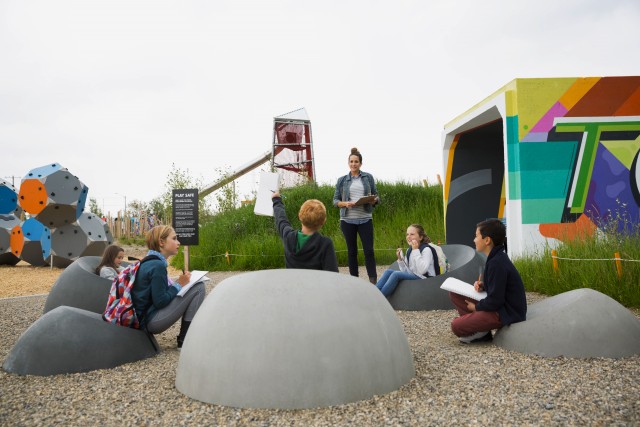One of the foundations of our Educational Philosophy is the notion of Multiple Intelligences, or that people learn in different ways. A pioneer of this concept is Psychologist Howard Gardner of the Harvard Graduate School of Education.

In our American education system, curriculum and teachers often mistakenly carry the assumption “that everyone can learn the same materials in the same way and that a uniform, universal measure suffices to test student learning.” But what if you are a person who does not fundamentally learn well through reading or listening? What if you are more experiential or social?
Gardner purports that there are 7 typical types of learners:
Visual-Spatial – think in terms of physical space, as do architects and sailors. Very aware of their environments. They like to draw, do jigsaw puzzles, read maps, daydream. They can be taught through drawings, verbal and physical imagery.
Bodily-kinesthetic – use the body effectively, like a dancer or a surgeon. Keen sense of body awareness. They like movement, making things, touching. They communicate well through body language and be taught through physical activity, hands-on learning, acting out, role playing.
Musical – show sensitivity to rhythm and sound. They love music, but they are also sensitive to sounds in their environments. They may study better with music in the background. They can be taught by turning lessons into lyrics, speaking rhythmically, tapping out time.
Interpersonal – understanding, interacting with others. These students learn through interaction. They have many friends, empathy for others, street smarts. They can be taught through group activities, seminars, dialogues.
Intrapersonal – understanding one’s own interests, goals. These learners tend to shy away from others. They’re in tune with their inner feelings; they have wisdom, intuition and motivation, as well as a strong will, confidence and opinions. They can be taught through independent study and introspection.
Linguistic – using words effectively. These learners have highly developed auditory skills and often think in words. They like reading, playing word games, making up poetry or stories. They can be taught by encouraging them to say and see words, read books together.
Logical -Mathematical – reasoning, calculating. Think conceptually, abstractly and are able to see and explore patterns and relationships. They like to experiment, solve puzzles, ask cosmic questions. They can be taught through logic games, investigations, mysteries.*
Do you recognize yourself in any of these? Do you recognize your child? Chances are, one of these will emerge as dominant in everyone’s learning process.
At Creative World Schools, we are passionate about providing children with multiple environments and tools for learning. We want to spearhead a revolution to allow children, from their earliest days, to drive their own learning journey!
Gardner reminds us that “Students learn in ways that are identifiably distinctive. The broad spectrum of students – and perhaps the society as a whole – would be better served if disciplines could be presented in a numbers of ways and learning could be assessed through a variety of means.”
*http://www.academia.edu/8943400/Gardner_s_theory_of_Multiple_Intelligences
